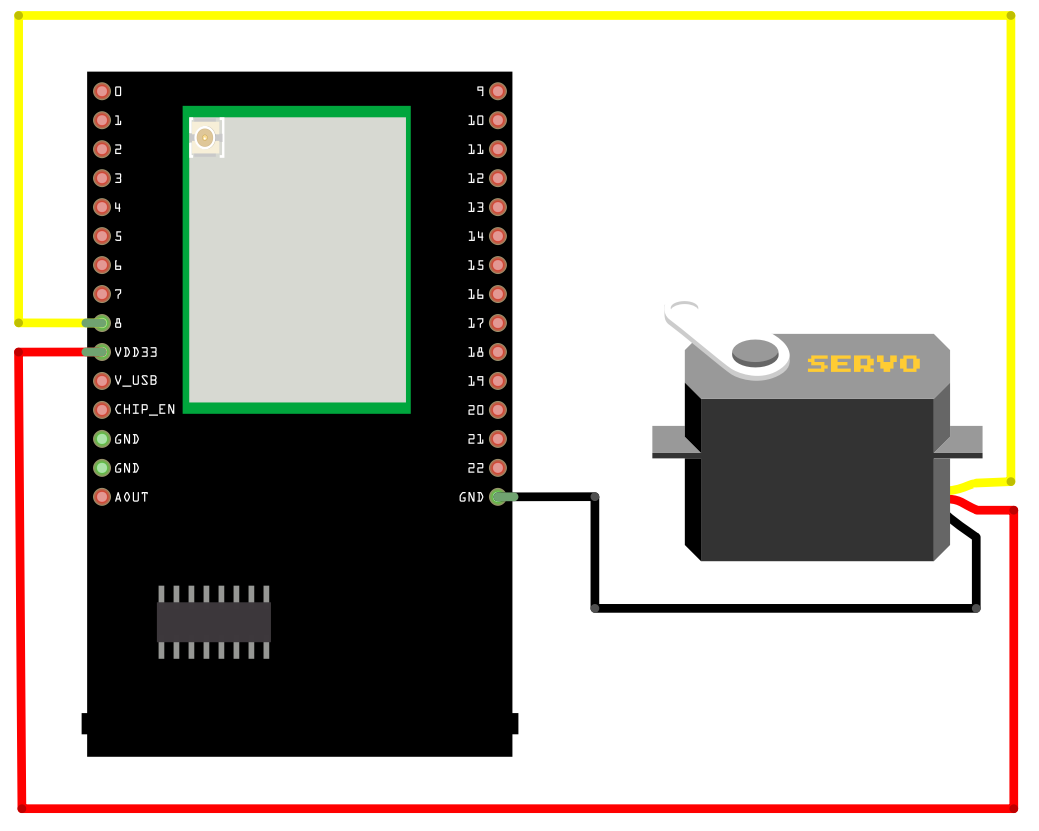Servo Control
Materials
AMB82-mini x 1
Servo x 1 (Ex. Tower Pro SG90)
Example
A typical servo has 3 wires, the red wire is for power, black or brown one should be connected to GND, and the other one is for signal data. We use PWM signal to control the rotation angle of the axis of the servo. The frequency of the signal is 50Hz, that is length 20ms. Each servo defines its pulse bandwidth, which is usually 1ms~2ms.
To control the rotation angle, for example if 1ms-length pulse rotates the axis to degree 0, then 1.5 ms pulse rotates the axis to 90 degrees, and 2 ms pulse rotates the axis to 180 degrees. Furthermore, a servo defines the “dead bandwidth”, which stands for the required minimum difference of the length of two consecutive pulse for the servo to work.
AMB82 MINI wiring diagram:
Code Reference
myservo.attach(9);
Next, rotate the axis to desired position:
myservo.write(pos);
